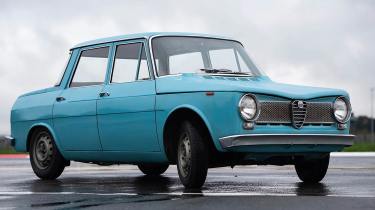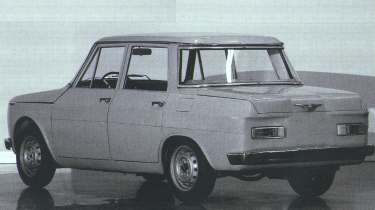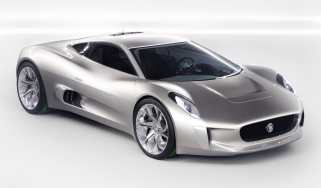Alfa Romeo Tipo 103 – dead on arrival
This compact four-door might have rivalled the mighty Mini in the 1960s if Alfa had kept the faith
A revolutionary transverse-engined, front-wheel-drive little car that stunned the world and set a new template when it was launched in the late 1950s. We all know that one. But in a parallel universe, the company behind the revolution was Alfa Romeo, not BMC.
It was 1952 when Alfa came up with its first design for a compact car with a crossways engine driving the front wheels. Codenamed Tipo 13‑61, this model was engineered by a team under Giuseppe Busso, later famed for the glorious V6 often associated with his surname, and used a 750cc two-cylinder created by splitting the twin-cam four from the forthcoming Giulietta saloon. If it had reached production, 13-61 would have been years ahead of the Mini, but it wasn’t to be. The costs involved in developing such an advanced design were simply too high and Alfa’s limited funds were better spent getting the new Giulietta and its variants into production.
The idea didn’t go away, however, and in 1954 Alfa’s state-owned parent, Finmeccanica, instructed the company to start work on a new ‘microcar’ which swiftly earned the unflattering nickname of Pidocchio, Italian for louse. The following year Fiat announced a new microcar of its own, the 600, and this prompted Alfa Romeo into another rethink. Rather than compete head-on with the might of Fiat, it decided to go larger in engine and overall size and so started on a new small car with a motor around 900cc in capacity.
Preliminary work toyed with this engine being horizontally opposed, and possibly air cooled, though both of these thoughts were abandoned in favour of a reduced-capacity version of the Giulietta’s twin-cam four-cylinder. By 1958 the design and engineering had been settled and the car was scheduled to go on sale in 1961. Then, in 1959, the Mini arrived, delivering a smack to the chops of Alfa engineers who knew if they’d stuck with project 13-61 they’d have made Issigonis’s new marvel look like a runner-up.
Despite this disappointment they continued work on their own small car, now codenamed Project V, in the knowledge that it could outshine the British car in some areas. It was, for example, more practical and spacious, being almost two feet longer and having four doors. It featured an 896cc twin-cam engine making a hearty 52bhp where the 848cc Mini could muster only 33 horsepower. It used all-round independent suspension, an all-synchromesh four-speed gearbox and disc brakes at the front. It also featured adjustable rear suspension using moveable spring mounts and worm gears attached to a small electric motor so that the driver could stop the thing dragging its tail on the ground when full loads added significantly to its delicate 725kg kerb weight.
As the Mini gradually found success in the early ’60s, it was slow going for the small Alfa, now codenamed Tipo 103. The problem was, Alfa resources were limited and it had decided to prioritise development of the larger Giulia saloon, launched in 1962. The first Tipo 103 prototype didn’t run until the same year, by which time management had lost faith in the project and commissioned engineering studies for a larger entry-level model with a 1300cc engine.
This would eventually lead to the Alfasud of 1971, complete with the flat four engine once ruled out for a small Alfa of the ‘50s. As for Tipo 103, it was cancelled during 1962, soon after the first and only prototype was completed. Happily, that car was stashed inside the Arese plant rather than destroyed and exists to this day in Alfa’s museum.









